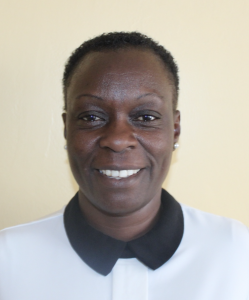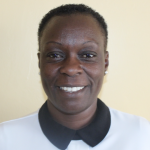Finding sufficient water to meet the daily water needs of the 415 students and 17 teachers at Masungutsa Primary School is a constant struggle. And no matter how hard students work to collect water, the water they bring from home or draw from different sources is making everyone ill.

"Pupils bring water from their respective homes. This water is drawn from different sources. The quality of the water cannot be ascertained, therefore [it] is not safe for human consumption," said our field officer, Mary Afandi.
"There are waterborne diseases like diarrhea, stomachache, and typhoid, which have really affected many pupils," Mary continued. "This has led to absenteeism on the part of the pupils, hence [the] decline in academic performance of the school."
The school compound has a 3,000-liter plastic rainwater harvesting tank, but the little it collects quickly runs dry. When the water students bring from home, and the rain tank empties, pupils are forced to leave the school campus to find more.
"We have suffered for many years without water. Sometimes I have a lot of work to do, and you are told to go and look for water. It makes us not perform well in our classwork," said 15-year-old Michelle M., seen below.

There is a hand-dug well at a neighbor's compound just opposite the school where students are allowed to draw water, but only for an hour on Wednesday and Friday afternoons, so the small amount they collect doesn't make significant progress towards supplying the water they need.
"Water is life, [and] without water, things will not move. Pupils are forced to come out of classes to go and look for water, which interferes with the lessons," said 52-year-old headteacher Donald Sanya, shown near the neighbor's hand-dug well below.

Hopefully, providing students with a reliable, safe water source on campus will enable them to reserve their time and energy for learning instead of collecting water.
What We Can Do:
New Well
We conducted a hydrogeological survey at this school and the results indicated the water table beneath it is an ideal candidate for a borehole well. Due to a borehole well's unique ability to tap into a safe, year-round water column, it will be poised to serve all of the water needs for this school's large population, even through the dry months.
The school will help collect the needed construction materials such as sand, rocks, and water for mixing cement. They will also provide housing and meals for the work team, in addition to providing local laborers. We will complement their materials by providing an expert team of artisans and drilling professionals, tools, hardware, and the hand-pump. Once finished, water from the well will then be used by the school's students and staff for drinking, handwashing, cooking, cleaning, and much more.
Handwashing Stations
The student health club will oversee the two new handwashing stations we will provide, and make sure they are kept clean and in working condition. The club leaders will fill the handwashing stations with water daily and make sure they are always supplied with a cleaning agent such as soap or ash.
VIP Latrines
We will construct two triple-door latrine blocks using local materials that the school will help gather. Three doors will serve the girls and three doors will serve the boys. All of these new latrines will have cement floors that are designed to be easy to use and to clean. And with a borehole right on school property, there should be enough water to keep them clean.
Training on Health, Hygiene, COVID-19, and More
We will hold a one-day intensive training session with students, teachers, and parents. This training will cover a wide range of topics including COVID-19 symptoms, transmission routes, and prevention; personal and environmental hygiene; and the operation and maintenance of the borehole, latrines, and handwashing stations. There will be a special emphasis on handwashing.
Our team of facilitators will use a variety of methods to train, including participatory hygiene and sanitation transformation, and asset-based community development. We will initiate a student health club, which will prepare students to lead other pupils into healthy habits at school and at home. We will also lead lectures, group discussions, and provide illustrative handouts to teach health topics and ways to promote good hygiene practices within the school including handwashing and water treatment. We will then conduct a series of follow-up trainings before transitioning to our regularly scheduled support visits throughout the year.
We and the school strongly believe that all of these components will work together to improve standards at this school, which will help lead to better student academic performance and will help unlock the opportunity for these students to live better, healthier lives.





 Borehole Well and Hand Pump
Borehole Well and Hand Pump
 Rehabilitation Project
Rehabilitation Project





































